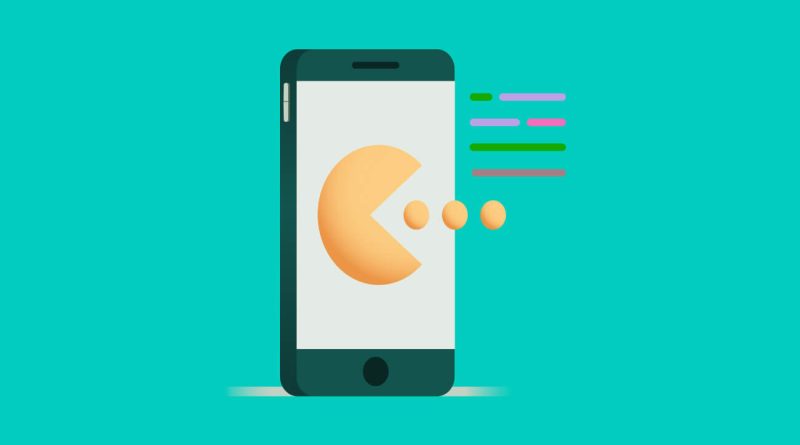Upcoming Trends in Mobile App Development for 2024
Mobile apps can have a variety of purposes, for example entertainment and games, as well as in business processes. Overall, mobile app development trends keeps changing, so companies have to stay up-to-date with customer needs.
Smart IoT technology helps mobile apps to communicate with smart devices and connected sensors to offer more convenience, efficacy and safety in use, such as management of contrators through mobile apps to remotely control household appliances, like friges.
Health & Fitness
health. Mobile apps help businesses to easily improve their brand awareness and gain extra passive income. They can be downloaded at anywhere and customers can easily track the their health with these health and fitness app for mobile.
An increasing number of fitness apps have also incorporated gamification features such as rewards, achievements and points as means to reward users for their continued engagement in workouts and keeping track with their workout plan.
Another is the growing use of 5G, enabling wireless mobile phones to run at 10 times the speed over 4G networks, subsequently cutting down app design and improving their performance. Moreover, 5G supports customers’ data management in a more secure environment and offers identity verification services, aside from facilitating m-commerce transactions and reducing customers’ transaction costs while making shopping retailers’ applications intuitive.
No-Code & Low-Code
Using so-called no-code and low-code software development platforms, without writing any traditional software code for mobile or web applications, amateur users can create powerful apps in rapidly changing, sometimes chaotic social and economic milieus. No-code and low-code platforms enable non-technical users to build mobile and web apps via graphical user interfaces (GUI) with drag-and-drop functionality that can rapidly connect components to third-party application programming interfaces (API) to create a functioning application. These platforms can be used to create prototype applications to validate concepts, build internal tools and dashboards to increase visibility into the data, or develop more scalable and customisable customer-facing apps – in some cases even requiring backend software code in order to integrate with existing business-affecting software systems. In addition, they can also optimise apps for foldable smartphones, such as the new iPhone from Apple that incorporates a huge single display that can be folded in half for easy portability for users and can provide an exceptional digital experience, leading to more downloads, higher engagement and retention rates.
AR/VR
Augmented reality (AR) digitally overlays artificial objects onto our physical reality. The user is able to interact with digital simulations that are superimposed onto the real world, with users splitting their attention between the virtual and physical worlds. Pokémon GO and Snapchat filters are some of the first examples of AR experiences, and nowadays AR is practically a requirement for any mobile app developer who wants to create deep, engaging experiences. Another example of industrial AR apps are those providing step-by-step advice when building an electrical device, reducing both time and frustration, as well as preventing expensive mistakes. In the case of virtual reality, as its name suggests, the environment of a user is substituted with an artificial environment: to get medical advice at home, simply wear this helmet and – voila! – you’re part of a 3D journey through history. Hybrid app development has swiftly become the best practise that combines perfect-performance, high-fidelity, cross-device compatibility while accelerating the development by wrapping these concepts into web technologies (HTML/CSS/JAVAScript).
Super-Apps
A super app, by contrast, is a versatile, digital one-stop solution: a single app that aggregates a variety of services. In parts of the world, like much of Asia, it has become the norm to pay for public transport, transfer money to friends, order a ride-hail, make a booking, buy insurance or order a home delivery all through the same, app-based interface. For users of super-apps, this makes for a less convoluted experience than juggling several apps, and a better user experience all round. It’s also a more effective use of developer energy and resources because it limits the apps that developers have to work on – ie, just one – saving considerable costs on the same resource mix that would be required for running several apps at once. Internally-facing super apps represent another recent direction for the leaders of software engineering teams: these combine a variety of tools or services into a single app, making life easy for employees (like an internal employee work-flow system), reducing efficiencies (as employees do not need to find things) and enhancing productivity (employees can spend more time working). The benefits also hold true for customers who no longer need to switch between different products to fulfill a single need.
Foldable Phones
The first devices will have foldable screens. According to several reports, these will become the default smartphone choice by 2024. App developers will have to make their apps function for those devices. This allows a business’s mobile app developers to design for the maximum use of screen space for immersive user experience, and to have multiple windows within that app for users’ workflows. For instance, VUIs can be incorporated into mobile apps to improve customer support experiences, giving the user an alternative to a menu tree of options and making her feel less trapped on hold. Furthermore, 5G mobile network speed is another upcoming trend that will contribute to enhance the mobile app performance, by making them faster and more reliable, thereby, facilitating developers and users by making the functionality improve and making the device crashes reduced.

